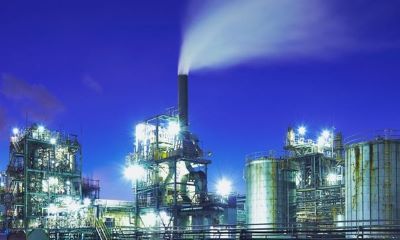Industry leaders laid thrust on trade negotiations based on fairness and reciprocity

India’s bilateral trade with the European Union (EU) amounted to USD 116.36 billion in 2021-22. Currently the EU is India’s second largest trading partner after the US, and the second largest destination for Indian exports.
In this context, the ‘India - EU Chemicals and Petrochemicals Forum’ on November 03, 2022 discussed the constraints in the chemicals and petrochemicals trade with EU and how revisiting the regulations could help India in further expanding and diversifying its exports of goods and services, including securing the value chains. Industry captains who gathered on the sidelines of ‘India Chem 2022’, The 12th Biennial International Exhibition and Conference in New Delhi, spoke on a host of issues.
“All the dyes for which we took technology from Europe 60-70 years ago, we are now banned from exporting our clothes if they are colored with the same dyes. The policymakers will have to look at such trade practices. Speciality chemicals need special attention as they appear to be missing from the policy rooms. Also we must pick up the purple technologies, purple ethanol and move ahead of the curve. We should call it Mission 2030 and Vision 2047,” said Prof. RK Khandal, President (R&D) and Business Development, India Glycol Limited.
“We talk about constraints; what hampers most is the regulatory framework. While Europe has implemented REACH, we are prioritizing BIS. If we import chemicals from Europe, we have to get multiple certifications from BIS, adding to our cost. Plants might I think when we talk about FTAs, both sides must agree for a common regulation, making things easier. The products are good and quality is good but the compliance is an irritant,” highlighted Mukesh Malhotra, Country Manager & Managing Director Solvay Specialities India.
“Presenting India as an attractive destination has been a challenge. For the last 20 years, we have seen most of the projects go to China and now a lot of countries such as Vietnam, Malaysia, and the Philippines are competing for the same. There is an emergence of the China plus N model. However, India still offers a lot of opportunities. The PLI scheme has been on the right track. The speciality chemicals and sustainability are the areas where EU and India can collaborate. We can partner with the European companies on circular economy and sustainability,” said Suresh Ramachandran, Country Head & Managing Director, Arkema India
“We are the largest supplier of fluoropolymers for the European market but there are certain constraints. The first and foremost is the technology transfer. These are developed countries and have set a process. When we develop a molecule in India, we need a technology either from Europe and Japan, or China for that matter. There is a hesitancy on the part of European companies in terms of technology transfers to India. The asking rates for royalty are very high and thus would make any such proposal untenable. In terms of regulatory framework, their companies will develop patented processes and products and then seek the same from us in a shorter span. I feel it is more to protect their own industry,” remarked Kapil Malhotra, Global Business Unit Head- Fluoropolymers, Gujarat Fluorochemicals Limited.
“During the current Ukraine crisis, we have seen how it is not wise to have manufacturing sites at a single place and need for diversification. India offers a lot of opportunities in that context. As per 2019 figures, India is the second largest trade partner for the UK and we export 19% chemicals to the EU. This is a positive development and thus presents a lot of potential. The barriers are mostly related to regulations. There is a green deal which is going to be implemented soon and REACH. When we talk about the FTAs with the EU, we must remember that it is a group of 28 odd countries. Thus we have to look at all aspects and India is rightly doing bilateral agreements with many countries,” said Sanjiv Kalia, Regulatory Manager, BASF India.
“There are two major constraints in India. From registration and taxation to environmental clearances, it takes 6 months’ time as compared to 15 days in Singapore and other countries. The government is offering 17% taxation if the project is completed by 2024 but in the case of our JV, the environmental clearance has taken 1 and half years. A few chemicals like Phthalic anhydride cost US$ 1200 in India whereas it is US$ 1700 in Europe. Most of the companies including us want to export but there was no vessel available to transport it in liquid form,” said Pramod Bhandari, Chief Financial Officer, IG Petrochemicals.
“India is poised to have good growth in the chemicals and petrochemicals sectors due to a lot of drivers. Despite the global disruptions, the bilateral trade with the EU has achieved an impressive annual growth of 43.5% in 2021-22. Since the growth potential is very high in the coming days, there is a lot of room for trade,” said Susanta Kumar Purohit, Joint Secretary (Chemicals), Department of Chemicals & Petrochemicals.
“The trade between India and Europe has been about 2500 years old and that gives us confidence how we can build it further. There is an enormous potential for technology transfer in India as we can have the technologies from the EU without having to reinvent the wheel at times. The growth is expected to remain strong going forward across the entire chemical value chain. India is slated to be the 4th largest economy by 2024 and there is an opportunity for global players to participate in this growth story,” said Amit Kaushal, Executive Director, PwC who moderated the session.
Subscribe to our newsletter & stay updated.